#India long-range missiles
Explore tagged Tumblr posts
Text
US-Pakistan relations: How Pakistan used blackmail to pressure the US on India, leading to the creation of the Washington missile
Tensions between the United States and Pakistan have escalated recently following revelations that Pakistan is developing long-range nuclear missiles capable of reaching major US locations. This includes efforts to build intercontinental ballistic missiles (ICBMs), a move that has raised alarms in Washington. US Deputy National Security Advisor Jon Finer disclosed that Pakistan had falsely…

View On WordPress
#India long-range missiles#intercontinental ballistic missiles#missile arms race#Pakistan Foreign Ministry#Pakistan missile development#Pakistan nuclear capabilities#Shaheen-III missile#united states#US sanctions on Pakistan#US-Pakistan relations
0 notes
Text
India successfully test-fires long range hypersonic missile
Flight trial of a long-range hypersonic missile being successfully conducted at Dr. APJ Abdul Kalam Island, off-the-coast of Odisha. | Photo Credit: PTI India has successfully test-fired a long-range hypersonic missile from the APJ Abdul Kalam Island off the coast of Odisha, Defence Minister Rajnath Singh said on Sunday, November 17, 2024. The missile was test-fired on Saturday (November 16),…

View On WordPress
#DRDO long-range hypersonic missile#India successfully test hypersonic missile#long-range hypersonic missile#Rajnath Singh
0 notes
Text
DRDO LRLACM: India Tests Long-Range Land Attack Cruise Missile
DRDO’s Long-Range Land Attack Cruise Missile (LRLACM): New Delhi, India – November 12, 2024 – India’s Defence Research and Development Organisation (DRDO) achieved a significant milestone in its indigenous missile development program with the successful maiden flight-test of the Long-Range Land Attack Cruise Missile (LRLACM). The test was conducted from the Integrated Test Range (ITR) at…
#Defence Budget#Defence Minister#DRDO#India#Long Range Land Attack Cruise Missile LRLACM#Rajnath Singh
0 notes
Text
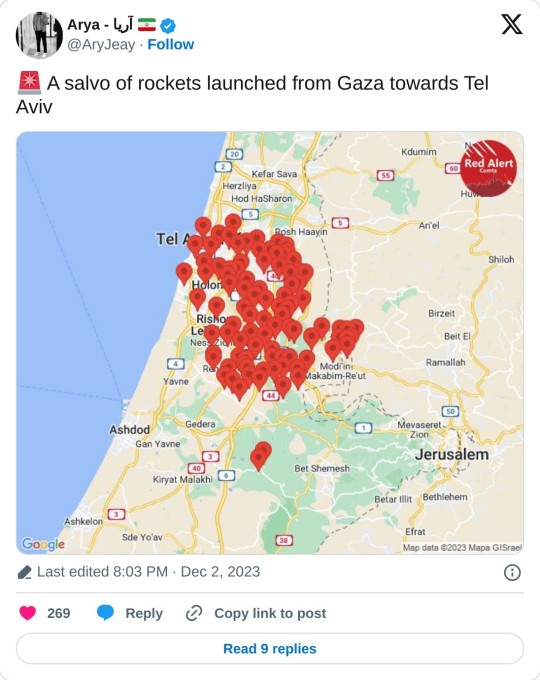
So, I've had people asking, why does it matter if rockets are fired towards Tel Aviv and other settlements when they cause a fraction of the damage done by an Israeli missile?
Psychological warfare - the rocket barrages eliminate any sense of security that Israelis might have during the war. It reminds them that there's a price for the occupation of Palestine. I can't tell you how many videos I've seen of people in luxury resorts and other high class lodgings shouting and fleeing in fear at a rocket from Gaza or Yemen. It makes it hard for them to go about their daily life ignoring what is happening. Furthermore it undermines the strength of the IDF. Netanyahu can go on TV and claim to have complete control over Gaza but a rocket barrage undoes that easily. A rocket barrage tells Israelis and the rest of the world that not only is Hamas (and the other groups) still intact, it has enough of a stockpile to still bomb parts of Israel over 50 days into the conflict. Israeli media is constantly shocked every time this happens because there's always the assumption that Palestinians are unprepared in every way for the conflict we're seeing today. It forces them to take the threat posed by the Resistance very seriously which of course leads to the existential meltdowns you see on Israeli social media accounts.
De-settlement - There are hundreds of thousands of internally displaced settlers right now. Most of them are unwilling to return because the settlements are still getting hit and it's obvious the IDF is struggling to get things under control. The annexation of Palestinian land and the formation of settlements has led to a great deal of violence towards Palestinians in both Gaza and the West Bank. Hence, why forcing settlers to evacuate is seen as a great success by the Resistance and their supporters. Hezbollah, for example, has mentioned that several times while doing debriefs of their efforts in the conflict
Hits to the economy - if the settlers are evacuated, who will run local businesses? Not to mention underpaid and overworked foreign migrant workers have fled the country while exploited Gazan workers are trapped in Gaza. Israel is trying to combat this by making deals with countries like India and Mali to get tens of thousands of workers but it's not going to be enough especially the longer this conflict goes on. There's also the fact that tourism won't recover to pre war levels due to security concerns. The same thing with foreign capital leaving the country. Israel is too unstable and evidently incapable of regaining that stability (by quickly defeating the Palestinian resistance) which makes it risky to invest in Israeli businesses.
Logistical nightmare - Gazan rockets are cheap to produce, Israeli interceptor missiles are not. Israel is spending more to stop the barrages of rockets than the Resistance has spent probably in the past 5 years. It's the same issue on the Northern border to Lebanon and whenever Yemen sends its long range missiles. It's not like both Israel, America and Europe have endless supplies of weapons and ammunition, they sent most of their stockpiles to Ukraine. The longer this goes on, the more dire things will get but we're already seeing the strain
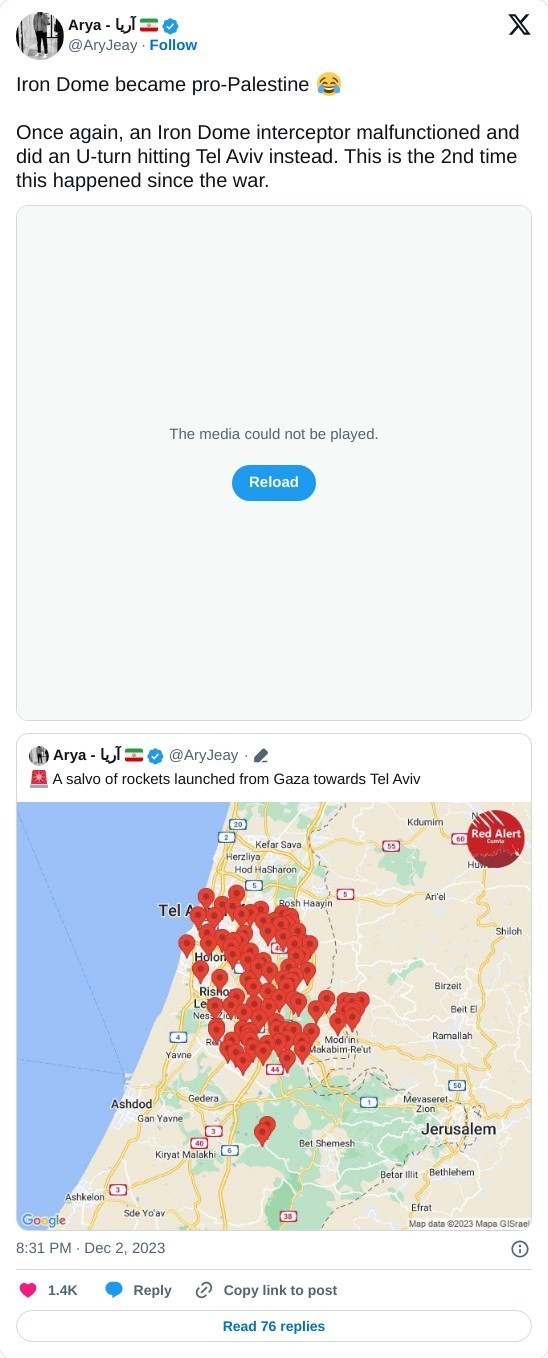
#yemen#jerusalem#tel aviv#current events#palestine#free palestine#gaza#free gaza#news on gaza#palestine news#war on gaza#war news
1K notes
·
View notes
Text
🔶Sunday morning - events from Israel
ISRAEL REALTIME - Connecting to Israel in Realtime
( VIDEO - airstrike on an apartment building aka weapons site in Beirut, with secondary explosions of the stored rockets. )
♦️LEBANON - IDF continues relatively constant attacks across Lebanon and focusing on Beirut. “The IDF carried out a series of targeted attacks throughout Beirut against a number of munitions warehouses.”
♦️SYRIA - reports of strong explosions in the Al Qusayr area, a town not far off the Lebanon border. Lebanese sources say Iran has significantly increased the transfer of munitions from Syria to Lebanon - which explains Israel bombing Syria-Lebanon border crossings.
♦️GAZA - Air Force aircraft attacked dozens of military targets in aid of the maneuvering forces, including munitions warehouses, underground infrastructures, and terrorist squads in Jabaliya - including a command and control complex inside an UNRWA center.
.. Heavy IDF activity around Jabaliya, encircled.
♦️GAZA - The IDF spokesman for the Arab media calls on the residents of the northern Gaza Strip to go south and is expanding the humanitarian zone to accommodate.
.. Hamas calls for disobeying evacuation orders from the north of the Strip to the south.
⭕2 LONG RANGE HEZBOLLAH ROCKETS MISSILES fired at Israel this morning - intercepted.
⭕2 SUICIDE DRONES FROM HEZBOLLAH at TEL AVIV, routing around through the sea, intercepted by IDF ships.
🔹Iran: NOTAM (air notice) The west of Iran is closed to aircraft traffic every night at certain hours.
🔹RUMORS of Israel attack notices continue to fly. Previously: India informed. Now: Jordan- received notice.
🔹GAZA - Report: In recent weeks, about 4,000 new terrorists were recruited into the terrorist organization Hamas from the funds or supplies of the aid trucks that Israel allows into the Gaza Strip.
🔹French President Macron tweets: "An immediate ceasefire is essential in Gaza as in Lebanon."
🔹The President of Azerbaijan responds to threats from Iran to harm his country if Israel attacks Iran: 'We will burn Iran and its proxies, we will not tolerate any threat to our territory.’
▪️PROTEST - ANTI-GOVT - TEL AVIV.. Demonstrators against the government block Kaplan Street in Tel Aviv: "The Cabinet of Death”. Small.
🔸DEAL NEWS.. Qatari reporters to the relatives of the hostages: “(Hamas leader) Sinwar is not currently communicating with us. He also disappeared to us and does not make contact. He stopped communicating via phones.”
#Israel#October 7#HamasMassacre#Israel/HamasWar#IDF#Gaza#Palestinians#Realtime Israel#Hezbollah#Lebanon
23 notes
·
View notes
Text
Reflecting the instincts of a cold war veteran, Joe Biden’s strategy was familiar: contain the conflict. When the US president spoke in Warsaw in March 2022, a month after Russia’s full-scale invasion of Ukraine, he drew a red line at Vladimir Putin’s toes. “Don’t even think about moving on one single inch of Nato territory,” he warned.
The western allies would provide weapons and aid to Kyiv, impose sweeping economic and financial sanctions on Moscow and reduce the rouble to “rubble”, Biden vowed. Though not a Nato member, the US would help Ukraine win this symbolic battle for freedom and democracy. But it would not directly confront Russia unless Russia first attacked Nato.
Thirty months on, Biden’s containment strategy is failing miserably. Like an untreated cancer, Ukraine’s crisis metastasises uncontrollably. Far from being confined to the mud and ice of the Donbas, the war’s spreading, toxic fallout grows more globally destructive by the day. It contaminates and blights everything it touches. True, a “hot” war between Russia and Nato has been avoided so far. Yet Polish and Romanian territory has been affected by stray missiles and maritime attacks. The entire Black Sea region is embroiled, as is Belarus. Putin claims that the west is already waging war on Russia and threatens it with nuclear weapons. Propagandists vow to vaporise Poland.
The crisis has triggered US-Europe splits in Nato and within the EU. Rows flare over sending troops and long-range missiles to Ukraine, inviting Kyiv to join the alliance, and forging a separate European “defence identity”. France’s newly hawkish stance is cancelled out by German caution.
Neutral Sweden and Finland were panicked into joining Nato. The Baltic republics fear renewed Russian aggression. Hungary and Serbia appease the Kremlin. Italy wavers. No one feels safe.
The war is fuelling right-left political extremism as support surges for Putin’s paid-for populist apologists. In Moldova, last weekend’s EU membership referendum was grossly distorted by what its president, Maia Sandu, called a huge bribery operation by “criminal groups working together with foreign forces” – namely, Kremlin stooges.
Now Moscow is eyeing this weekend’s elections in Georgia where it covertly conspires to ensure pro-western parties lose. Such hybrid warfare – subversion, disinformation, influence operations, cyber-attacks, scams, online trolling – has mushroomed worldwide since 2022, as authoritarian regimes follow Russia’s lead.
Failure to contain the war is encouraging seismic geopolitical shifts, most notably the China-Russia “no-limits” partnership. China’s president, Xi Jinping, gets cheap oil; ostracised Putin gets sanctions-busting dual-use tech plus diplomatic backing. But it’s so much more than that. At last week’s Brics summit – hosted by Putin – Russia, China, India, Brazil and South Africa were joined by Iran, North Korea, Syria, Venezuela and, alarmingly, Nato member Turkey (among many others). Putin envisages a global anti-western alliance, Xi a post-American, China-led 21st-century new world order.
These are no idle dreams. For many second-tier countries, the west’s condemnation of Russian aggression in Ukraine and its refusal to condemn, and active facilitation of, Israeli aggression in Palestine represents an intolerable double standard. Some are switching sides.
What better illustrates the unbounded nature of this inexorably expanding conflict than the startling news that North Korea, in a breath-taking counterpoint to US and UK military intervention in the Korean war nearly 75 years ago, is deploying troops to the Ukraine theatre?
And how appalling that Donald Trump can cynically use Ukraine’s “forever war” to persuade US voters that Democrats like Kamala Harris cannot control a chaotic world, Nato is a con-trick run by freeloading Europeans and the UN is useless.
The war diverts attention from other grave conflicts, from Sudan to Myanmar. Attacks on Kyiv’s grain exports have caused food shortages and price spikes hurting poorer countries. It disrupts cooperative action on climate; indeed, it has greatly increased greenhouse gas emissions While Putin, indicted for war crimes, goes unpunished, respect for international law and the UN charter plummets. Impunity flourishes.
The war’s enormous economic costs are escalating. The World Bank estimates that the first two years caused $152bn (£117bn) of direct damage in Ukraine. The UN predicts $486bn is needed for recovery and reconstruction. Each day, the totals rise. Meanwhile, Russia constructs shadowy international networks – an officially approved black market – to circumvent sanctions and undermine dollar hegemony.
The cost in lives is heartbreaking. Conservative UN estimates suggest that about 10,000 civilians have been killed and twice that number injured. More than 30,000 Ukrainian soldiers may have died. Russian military casualties are an estimated 115,000 killed and 500,000 wounded. The cost to Russian society of intensifying authoritarianism, corruption and suppression of dissent and free media is immeasurable.
Ukraine has not lost the war, which is a remarkable feat in itself. But it is not winning, either. Western support is weakening, despite the rhetoric; Russian forces advance. President Volodymyr Zelenskyy’s “victory plan” has few takers. Winter is coming.
How much of this could have been prevented? Some developments, such as the China-Russia axis and rising rightwing populism, were happening anyway. The war simply accelerated them. But a lot of the wider damage was avoidable, wholly or in part.
In Warsaw, Biden was candid, almost boastful: back in January 2022, US intelligence knew that the invasion was imminent. He said he had repeatedly warned Putin it would be a big mistake. Yet, given his passionate belief that Ukraine’s fight for democracy and freedom has vital universal significance, surely what Biden should have done is told Russia’s dictator bluntly: “Forget it. Don’t invade. Or else you will find yourself fighting a better-armed, more powerful Nato.”
It’s called deterrence. It’s what Nato is for. Containment was never enough. Putin might still not have listened. But coward that he is, he probably would have – and saved everyone a world of pain.
13 notes
·
View notes
Text
Vladimir Putin has warned the US that if Washington deploys long-range missiles in Germany from 2026, Russia will station similar missiles within striking distance of the west.
The US would start deploying long-range fire capabilities in Germany in 2026 in an effort to demonstrate its commitment to Nato and European defence, Washington and Germany said earlier this month.
The US’s “episodic deployments” are in preparation for longer-term stationing of such capabilities that will include SM-6 and Tomahawk cruise missiles and developmental hypersonic weapons that have a longer range than current capabilities in Europe, Washington and Berlin said.
In a speech on Sunday to sailors from Russia, China, Algeria and India to mark Russian navy day in the former imperial capital of St Petersburg, Putin told the US it risked triggering a cold war-style missile crisis with the move.
“The flight time to targets on our territory of such missiles, which in the future may be equipped with nuclear warheads, will be about 10 minutes,” Putin said. “We will take mirror measures to deploy, taking into account the actions of the United States, its satellites in Europe and in other regions of the world.”
5 notes
·
View notes
Text
Chapter 203 Trivia
Happy 4th of July from Dr. Xeno*!
(*Indirectly.)
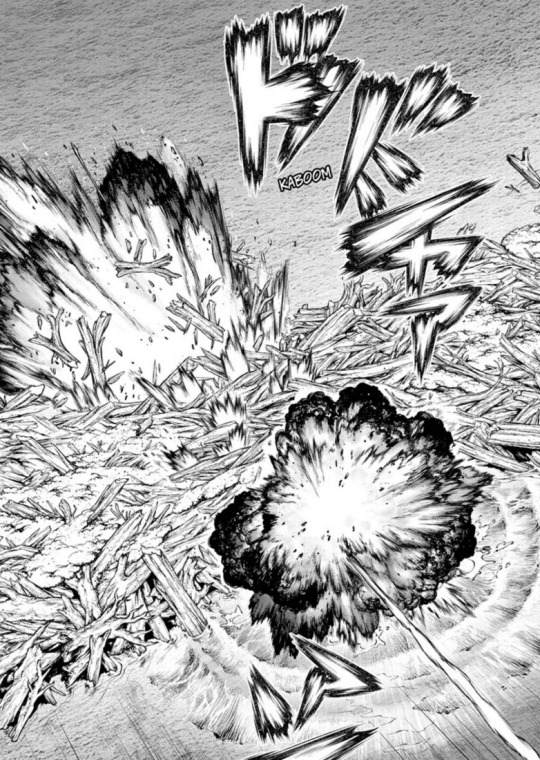

Fluorite mines still exist in Japan, however they're far inland so the KoS can't make use of their boat routes for transport.
Fluorite is one of the first materials shown to fluoresce (=glow when light/EM radiation hits it), which is what the phenomenon was named after!



One of the major problems in improving telescope quality is getting rid of chromatic aberration, which can be improved by using lenses with a lower refractive index (such as those made of fluorite rather than glass). This bends the light less, leading to clearer magnification.


The rocket design is similar to cruise missiles, in that it uses a jet engine rather than a rocket engine. Cruise missiles will follow an almost direct path to their target, and have the ability to adjust direction at any point. Ballistic missiles cannot.


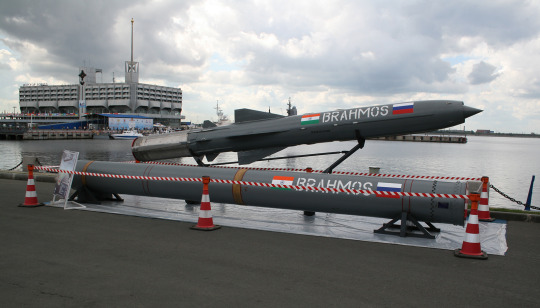
The blocky thing shown here could be a stylized vacuum column tape drive, a device for storing data on magnetic tape (the black ribbon in cassettes) to be used in computations.
One of these devices is the IBM 7090, which was used by NASA to control space flights in the 60s.


The map shows that the KoS may be aiming to land around Goa in India.
Assuming they don't stop, the journey via the Suez is >10 days, and >23 days via the Cape of Good Hope.

The Banana Canal seems to be how the villagers remember the name of the Panama Canal, which is odd because bananas only grow in the very south of Japan (if at all) so they're unlikely to have been familiar with them before reaching South America.


The Suez is a man-made canal that gets drained and cleared every 10 years so the boats can pass through unobstructed. The area has also been mostly desert for thousands of years. Sandstorms would soon fill it in, making it impassable.

What Ryusui is worried about here is probably similar to the Ever Given back in March, when winds ran it aground, blocking the whole canal. It had to be dug out to be freed, which the KoS can't do here. Turning around or backing up is also impossible if the canal is too narrow.

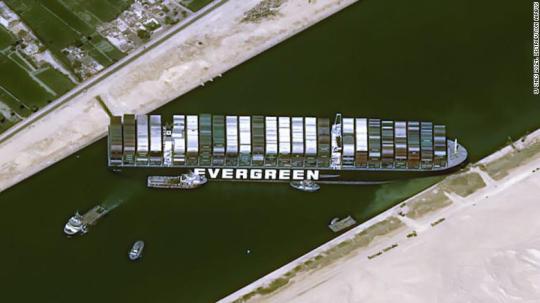
Kohaku is the only power/fighter team member here, and she's definitely making sure to represent the hot-heads! Getting revenge on a canal, trying to destroy things…


Chelsea's old banners made a comeback, which isn't surprising since fabric is tedious to make. Reuse is the basis of Senku's science after all!
But more importantly, how the H-E-L-L did it survive those 7 years when everyone was petrified?!
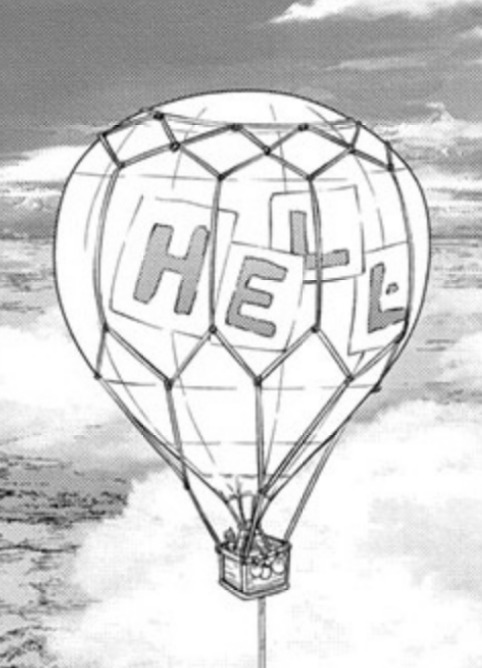
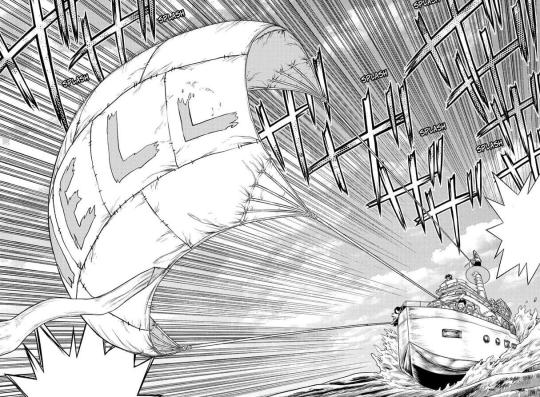

The dam shown looks more like a beaver dam or a deliberate structure than something that naturally got packed like that. The way it follows onto the land is a little odd to me as well�� Something could be hiding underneath?


Senku always makes sure to number his rockets.
(I spent too long wondering if this was a pun, but the i-shi/stone pun is for 1-4, and "Dr. One" doesn't quite fit how "Dr. Stone" is pronounced…)
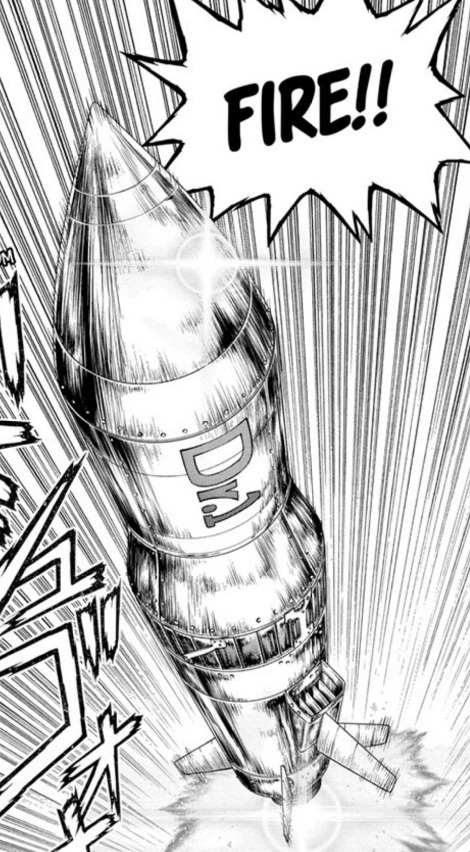
The rocket has two sets of controllers, one used by Senku on the ship and the other by Ryusui about half way to the dam. It's unlikely that this choice is due to range issues, as the cell phones worked 80 km apart and this is only 20 km.


It's probably so that Ryusui can pinpoint the landing while Senku takes care of the launch.
The coordination between them is impressive!
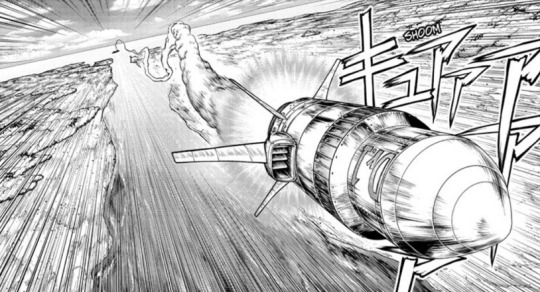
India has likely been chosen as Math City because of its long history of mathematics dating back over 3000 years, before Europe had made similar advances. They invented many important concepts, such as negative numbers, the idea of zero, and decimal points.
The other option for India being Math City is that it has many natural resources useful for making computers and other electronics, however I think we'll have to wait until future chapters to see why they chose it!
12 notes
·
View notes
Text
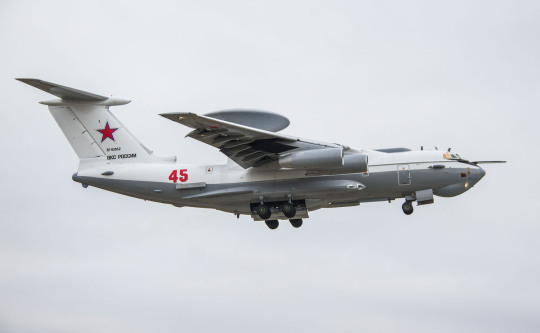
Modernized A-50U AWACS aircraft is delivered to the Russian Air Force
Fernando Valduga By Fernando Valduga 09/22/2023 - 16:00in Military
The United Aircraft Corporation (UAC) delivered to the Russian Air Forces a modernized aircraft of the A-50U Airborne Alert and Control System (AWACS) that will help in the detection of aircraft and missiles launched from Ukraine.
On July 3, 2023, Russian Defense Minister Sergei Shoigu, in a conference call with officers of the Russian Armed Forces, highlighted the need for a rapid modernization of the A-50.
According to the government-controlled RIA Novosti, Shoigu said: “These flying radars are used in special military operations. The timely modernization of the fleet of these aviation complexes will significantly increase the effectiveness of troop groupings in solving the tasks they face."
The upgraded A-50U has undergone a comprehensive modernization, significantly improving its capabilities. This advanced version has the ability to detect and identify new types of aircraft, while tracking a greater number of targets, including hostile fighters, compared to its predecessor. The integration of state-of-the-art equipment resulted in the reduction of the aircraft's weight, thus expanding its flight range and mission durability.
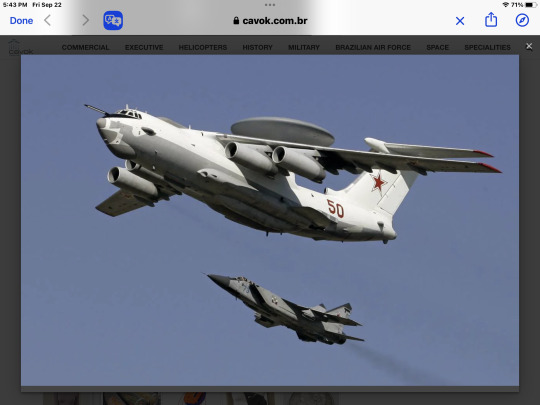
The renewed aircraft features all-new electronic components with improved performance and speed, allowing improved functionality in its software. In addition, the use of larger and higher resolution LCD monitors has greatly improved the efficiency of the radar display system, improving the overall ergonomics of the aircraft to reduce crew fatigue. Notably, the A-50U is now equipped with an advanced flight and navigation system.
Rostec emphasized the vital role of the A-50U long-range surveillance and radar guidance complex in modern combat scenarios. Through this modernization effort, the aircraft received new technical equipment that significantly increases its speed and detection range of air, land and sea targets, thus increasing its effectiveness in combating potential threats. This modernization initiative is aligned with the plan of the state defense order to upgrade the AWACS aircraft fleet.
Concern Vega, operating under Ruselectronics, played a key role in the modernization process, while United Aircraft Corporation's TANTK also contributed to the effort.
Vyacheslav Mikheev, general designer of Concern Vega, said there are plans underway to complete the modernization of another A-50 complex in the near future.
Tags: Military AviationAWACSBeriev A-50UROSTECRussia
Sharing
tweet
Fernando Valduga
Fernando Valduga
Aviation photographer and pilot since 1992, he has participated in several events and air operations, such as Cruzex, AirVenture, Daytona Airshow and FIDAE. He has work published in specialized aviation magazines in Brazil and abroad. Uses Canon equipment during his photographic work throughout the world of aviation.
Related news
The U.S. Army announced the delivery of the first two AH-64E Version 6 Apache Guardian attack helicopters, but only provided photos of the two previous AH-64D they replaced, being prepared for a flight back to the United States. (Photo: U.S. Army)
HELICOPTERS
U.S. Army Aviation Unit in Europe receives new Apache helicopters
22/09/2023 - 14:00
MILITARY
Germany acquires 13 state-of-the-art LUNA drones and new radar for Eurofighters
09/22/2023 - 11:00
MILITARY
VIDEOS AND IMAGES: F-35A fighters operate from a highway for the first time
22/09/2023 - 09:00
MILITARY
French Air Force closest to retiring its C-135FR tankers after receiving the 12º A330 MRTT
09/22/2023 - 08:27
MILITARY
AUDIO: USMC F-35B fighter flew for more than 100 kilometers, without the pilot on board, before falling
21/09/2023 - 23:25
MILITARY
Boeing negotiates sale of more P-8I Poseidon maritime patrol planes to India
21/09/2023 - 18:24
7 notes
·
View notes
Text
Unleashing Power and Precision: A Comprehensive Guide to Indian Air Force Fighter Planes
Introduction
The Indian Air Force (IAF) stands as a symbol of strength and prowess in the vast skies above the subcontinent. Over the years, it has acquired a formidable fleet of fighter planes, each a marvel of engineering and a testament to the nation's commitment to aerial defense. In this blog post, we will delve into the Indian Air Force Fighter Planes list, exploring the capabilities and features that make them the guardians of the Indian airspace.
Evolution of the Indian Air Force
The IAF has come a long way since its inception in 1932. From its humble beginnings with obsolete biplanes, the force has evolved into a modern and technologically advanced air arm. The backbone of the IAF's aerial might lies in its fleet of fighter planes, which have played a crucial role in safeguarding the nation's sovereignty.

Key Considerations in Fighter Plane Selection
Before diving into the list of Indian Air Force fighter planes, it's essential to understand the criteria that govern the selection of these aerial assets. The IAF considers factors such as range, speed, agility, firepower, and electronic warfare capabilities when choosing its fighter planes. These aircraft are designed to operate in diverse environments, from the scorching deserts of Rajasthan to the high-altitude regions of the Himalayas.
Indian Air Force Fighter Planes List
Sukhoi Su-30MKIThe Su-30MKI, a Russian-origin aircraft, has become the backbone of the IAF's fighter fleet. With its twin-engine design, long-range capabilities, and advanced avionics, the Su-30MKI is a versatile and lethal platform. It can carry a variety of air-to-air and air-to-ground missiles, making it a potent force in both aerial combat and ground attacks.
Dassault RafaleThe Dassault Rafale, a French-made multirole fighter, represents the cutting edge of modern military aviation. Its advanced radar systems, electronic warfare capabilities, and precision-guided munitions make it a force to be reckoned with. The Rafale has significantly bolstered the IAF's strategic capabilities, providing an edge in both air superiority and ground attacks.
MiG-29The MiG-29, a stalwart in the IAF's fleet, has undergone various upgrades to enhance its performance. Known for its agility and speed, the MiG-29 is a fourth-generation fighter that can hold its own in air-to-air combat. Its role in providing air defense and escorting other aircraft adds a layer of versatility to the IAF's operations.
TejasDesigned and manufactured indigenously, the Light Combat Aircraft (LCA) Tejas is a point of pride for India's aerospace industry. With its lightweight design and advanced avionics, the Tejas is tailored for maneuverability. As the IAF continues to induct Tejas variants, it marks a significant stride toward self-reliance in defense production.
JaguarWhile originally designed for ground attack missions, the Anglo-French SEPECAT Jaguar has been adapted for various roles within the IAF. Equipped with a combination of precision-guided munitions and a formidable gun, the Jaguar serves as a potent asset in both air-to-ground and anti-ship operations.
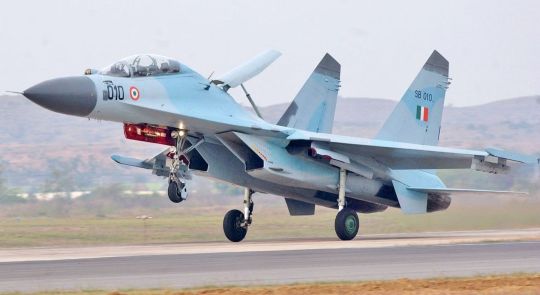
Strategic Importance of Fighter Planes
The role of fighter planes extends beyond just engaging in dogfights. They serve as a critical component of national defense, acting as a deterrent and providing a strategic advantage. The IAF's fighter planes play a pivotal role in ensuring air superiority, conducting reconnaissance, and delivering precision strikes when needed.
Challenges and Future Developments
While the IAF's fleet of fighter planes is formidable, it is not without challenges. The need for continuous upgrades, technological advancements, and the emergence of new threats require constant vigilance and adaptation. The IAF is actively pursuing modernization initiatives, including the development of next-generation fighter aircraft, to maintain its edge in an ever-evolving geopolitical landscape.
Conclusion
In conclusion, the Indian Air Force's fighter planes stand as a testament to the nation's commitment to aerial defense. From the iconic MiG-21s of yesteryears to the state-of-the-art Rafales and Tejas of today, each aircraft in the IAF's inventory plays a crucial role in securing the skies above India. As the nation continues to invest in indigenous defense production and embraces cutting-edge technology, the future of the IAF's fighter fleet looks promising, ensuring that the Indian skies remain safeguarded for generations to come.
3 notes
·
View notes
Text
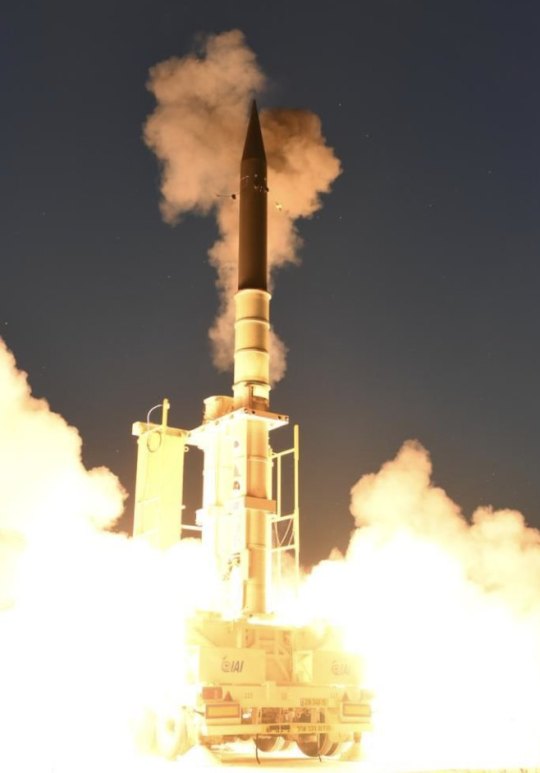
Today Israel confirmed that Germany is buying the Arrow air defense system. The overall cost is thought to be around $4 billion. Israel and Germany had been in talks since last year. The system was developed by IAI with support from Israel and the US. This system is designed to defend against the top tier of long range threats, such as ballistic missiles, the kind of missiles that are exoatmospheric.
This is a big purchase. It follows Israel selling David's Sling to Finland. What this means is that Israeli defense tech is now increasingly integrated throughout Europe. Hardly a week goes by without another announcement. Elbit, for instance, has a series of recent deals, including an EW deal in Germany announced this week for helicopters. Greece is getting Rafael's Spike missiles. Central and Eastern Europe is a big market.
As European countries empty inventories to send to Ukraine they need new and modern systems. Israel is well placed to provide systems that are proven. Also Israel exports are not an all-time high for defense products; a total of $12 billion last year. Of this around one quarter went to the Abraham Accords countries.
Israel is now more than just providing "weapons", these are systems and system of systems that help integrate radars in central Europe to countries defenses; and also provide multiple layers of defense tech. Israel also has strategic partnerships in India, with a lot of partnerships for India's local production; and with Azerbaijan and increasingly in Asia/Pacific. In the US Israeli companies partner with major US companies such as Lockheed and Raytheon; and unique Israeli defense products, such as items that protect against drones, or the Trophy system for tanks, are being outfitted to US forces. The talk and critique we hear sometimes of "the US should end aid to Israel" has no basis in reality. The R and D partnerships and deals are so deep and complex today that the critics have no idea what they are talking about.
Here is Israel's statement*
Defense Minister Yoav Gallant, the Israel Ministry of Defense and Israel Aerospace Industries welcome the German Ministry of Defense and the Bundestag’s Budget and Defence Committees’ approval of the commitment to initiate the necessary steps to acquire the Israeli “Arrow 3” air and missile defense system.
The professional teams led by the Director General of the IMOD, Maj. Gen. (Res.) Eyal Zamir, the DDR&D’s Israel Missile Defense Organization (IMDO) and Israel Aerospace Industries are continuing discussions with their German counterparts to finalize the procurement contract. Israel Ministry of Defense officials maintain ongoing communication with the American administration to ensure the necessary sales approval.
The German commitment letter will be signed after the American administration grants approval for the sale.
Please find photos of the Arrow 3 system below for your use.
Photo credit: Ministry of Defense Spokesperson’s Office
Seth J. Frantzman
18 notes
·
View notes
Text
Cia dossier 4852

Name : T-54/T-55
Type of weapon: Mbt ( Main battle tank)
Description: The main battle tank of the Marxist world and Russia's answer to the American M48 Patton and British Centurion, the T-54/T-55 is the most common and main tank of the Soviet Union and its client states and allies, like Egypt and India. Production totals are difficult to predict, but other analysts have predicted numbers ranging from 96,500 to 100,000, perhaps even more than that number.
Having been the most involved tank in 20th-century and early 21st-century conflicts, it's no surprise that it's still going strong today in the USSR, being a part of its tank range along with the t62 mbt.
It was first conceived in the late 1940s as a replacement for their t-34 tank, which was in use since the Second world war, with the Soviet Morozov design bureau up to the task. they managed to design and develop a tank that was better armed, better armored, and cheap than the t-34. By 1948, the first t-54 tank rolled off the production line.
Ever since then, more of these tanks became produced in the masses, eventually becoming the most produced tank in history.
Design: The t-54/t-55 tank was an excellent tank for its time and since its numerous upgrades, it has only gotten tougher. The tanks are mechanically simplistic and robust as well as easy to operate, which benefits the Soviet tank crews as they don't need to receive high levels of training or education unlike in Nato countries.
The t-54/t-55 is also able to have high mobility, is capable of crossing terrain and even rivers due to its lightweight (14.6), and even is able to operate in winter fighting due to a start-up system.
The t-54/t-55 is also the world's first tank to be equipped with NBC ( Nuclear, Biological, and Chemical) Protection.
Armament: The t-54/t-55 has a considerable yet obsolete armament for its age, armed with a 100mm dt-10 anti-tank gun, which has been used since WW2. it is also armed with a Dshk 38 antiaircraft machine gun. Later upgrades include a flamethrower tank, and the ability to launch anti-tank missiles out from the main gun.
Threat level: 9. The t-54/t-55 has proven to be a tough adversary to face off against. Its high mobility and cheapness and ease of production, make it the main tank threat facing Western Europe. However, they are ways to stop this tank and limit its effectiveness.
The internal ammunition supply of the tank is not shielded, carrying the risk of a secondary explosion. The gun, while still tough, is obsolete for the modern age, and it does not have the ability to accurately fire at long ranges, though this is slowly being corrected.
Additionally, the Armor is also weak against anti-tank missiles, though there is a fear that weakness may be overcome.
Nato tanks are to engage the enemy tanks with clear precision and try to limit their numbers as they are often seen in units of 5 to 20 tanks in a single battalion, thus if outnumbered, avoid fighting them head-on and try to shorten their number. Air support will also be use full on the battlefield.
This article was created by
Cia Analyst Joseph P Dowery.
3 notes
·
View notes
Photo
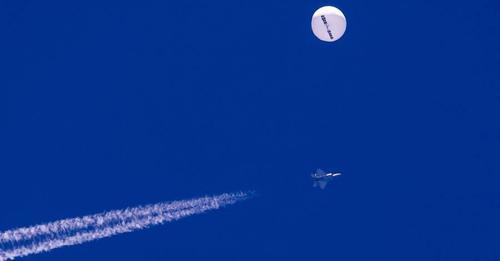
The Chinese balloon that transfixed America in recent days was no surprise to Cheng Ming-dean. “This balloon has been appearing for a long time!” the head of Taiwan’s Central Weather Bureau wrote on Facebook on Saturday, pointing to a picture of the same kind of balloon taken by an agency employee in September 2021.
The US government’s outing and downing of the balloon have focused global attention on China’s sprawling programme for so-called lighter-than-air vehicles — which Beijing is rapidly putting to use around the world, including for military purposes, after years of research and pilot projects. The Pentagon has said it has observed a second balloon over Central and South America, without elaborating, and stressed that China had been operating a number of surveillance balloons in recent years. T
hey “are all part of a [Chinese] fleet of balloons developed to conduct surveillance operations, which have also violated the sovereignty of other countries”, a US defence official said. “These kinds of activities are often undertaken at the direction of the People’s Liberation Army. Over the past several years, Chinese balloons have previously been spotted over countries across five continents, including in Asia, South Asia and Europe.”
In February last year, four groups of high-altitude balloons were detected over northern Taiwan, home to most of the country’s population and some of its most important air defence sites. The same month, the US Air Force scrambled fighters to intercept an unmanned balloon off Kauai, a Hawaiian island that has a key missile-testing range. In January 2022 one of the white orbs was spotted over India while another was seen over Taiwan in September 2021.
The earliest publicly reported sighting was over the northern Japanese city of Sendai in June 2020. Taiwan’s armed forces last year confirmed a local news report that the February 2022 balloon swarm originated from the PLA Rocket Force, the missile arm of the Chinese military. In keeping with Taipei’s strategy to avoid public panic over Chinese military threats, the defence ministry said the balloons posed no danger and were being used for meteorological observations.
But despite the apparent overlap with Beijing’s explanation for the latest balloon, analysts dismiss the claim that these are harmless civilian craft. Cheng, the weather bureau chief, said the Chinese devices were fundamentally different from weather balloons in size, altitude and materials. In the most stunning evidence of China’s military use of stratospheric balloons, Chinese media including the military channel of state broadcaster CCTV reported in September 2018 that a high-altitude balloon tested hypersonic missiles.
Video footage carried by CCTV and reposted on social media app Douyin at the time, but now deleted, showed a balloon visually identical to the one over the US last week, carrying what looked like three different kinds of warheads. According to Chinese media reports and a related Chinese Academy of Sciences research paper, they were models for “wide speed range” hypersonic vehicles, which can fly both below and above the speed of sound.
China’s research on LTA vehicles belongs to two institutes at the Chinese Academy of Sciences, one of which is exclusively dedicated to high-altitude balloons. But in line with Beijing’s “military-civil fusion” policy, which calls for civilian or commercial technology developments to be made available for military use if necessary, those efforts are closely integrated with those of the PLA, its research institutes and the military-industrial complex, and as such subject to secrecy.
[Financial Times]
7 notes
·
View notes
Text
Events 8.21 (after 1900)
1901 – Six hundred American school teachers, Thomasites, arrived in Manila on the USAT Thomas. 1911 – The Mona Lisa is stolen by Vincenzo Peruggia, a Louvre employee. 1914 – World War I: The Battle of Charleroi, a successful German attack across the River Sambre that pre-empted a French offensive in the same area. 1918 – World War I: The Second Battle of the Somme begins. 1942 – World War II: The Guadalcanal Campaign: American forces defeat an attack by Imperial Japanese Army soldiers in the Battle of the Tenaru. 1944 – Dumbarton Oaks Conference, prelude to the United Nations, begins. 1944 – World War II: Canadian and Polish units capture the strategically important town of Falaise, Calvados, France. 1945 – Physicist Harry Daghlian is fatally irradiated in a criticality accident during an experiment with the Demon core at Los Alamos National Laboratory. 1957 – The Soviet Union successfully conducts a long-range test flight of the R-7 Semyorka, the first intercontinental ballistic missile. 1959 – United States President Dwight D. Eisenhower signs an executive order proclaiming Hawaii the 50th state of the union. Hawaii's admission is currently commemorated by Hawaii Admission Day. 1963 – Xá Lợi Pagoda raids: The Army of the Republic of Vietnam Special Forces loyal to Ngô Đình Nhu, brother of President Ngo Dinh Diem, vandalizes Buddhist pagodas across the country, arresting thousands and leaving an estimated hundreds dead. 1965 – The Socialist Republic of Romania is proclaimed, following the adoption of a new constitution. 1968 – Cold War: Nicolae Ceaușescu, leader of the Socialist Republic of Romania, publicly condemns the Soviet-led Warsaw Pact invasion of Czechoslovakia, encouraging the Romanian population to arm itself against possible Soviet reprisals. 1968 – James Anderson Jr. posthumously receives the first Medal of Honor to be awarded to an African American U.S. Marine. 1971 – A bomb exploded in the Liberal Party campaign rally in Plaza Miranda, Manila, Philippines with several anti-Marcos political candidates injured. 1982 – Lebanese Civil War: The first troops of a multinational force lands in Beirut to oversee the Palestine Liberation Organization's withdrawal from Lebanon. 1983 – Philippine opposition leader Benigno Aquino Jr. is assassinated at Manila International Airport (now renamed Ninoy Aquino International Airport in his honor). 1986 – Carbon dioxide gas erupts from volcanic Lake Nyos in Cameroon, killing up to 1,800 people within a 20-kilometre (12 mi) range. 1988 – The 6.9 Mw Nepal earthquake shakes the Nepal–India border with a maximum Mercalli intensity of VIII (Severe), leaving 709–1,450 people killed and thousands injured. 1991 – Latvia declares renewal of its full independence after its occupation by the Soviet Union since 1940. 1991 – Coup attempt against Mikhail Gorbachev collapses. 1993 – NASA loses contact with the Mars Observer spacecraft. 1994 – Royal Air Maroc Flight 630 crashes in Douar Izounine, Morocco, killing all 44 people on board. 1995 – Atlantic Southeast Airlines Flight 529, an Embraer EMB 120 Brasilia, attempts to divert to West Georgia Regional Airport after the left engine fails, but the aircraft crashes in Carroll County near Carrollton, Georgia, killing nine of the 29 people on board. 2000 – American golfer Tiger Woods wins the 82nd PGA Championship and becomes the first golfer since Ben Hogan in 1953 to win three majors in a calendar year. 2013 – Hundreds of people are reported killed by chemical attacks in the Ghouta region of Syria. 2017 – A solar eclipse traverses the continental United States.
2 notes
·
View notes
Text
[ad_1] Defence Minister Rajnath Singh held a key meeting with Russian President Vladimir Putin on Tuesday, on the sidelines of the 21st session of the India-Russia Inter-Governmental Commission on Military and Military Technical Cooperation (IRIGC-M&MTC). The meeting highlighted the enduring partnership between the two nations. Singh conveyed warm greetings of Prime Minister Narendra Modi to President Putin. Raksha Mantti Shri @rajnathsingh called on Russian President Mr. Vladimir Putin at Kremlin in Moscow. pic.twitter.com/kWDcKuu7bP — रक्षा मंत्री कार्यालय/ RMO India (@DefenceMinIndia) December 10, 2024 The discussions focused on enhancing bilateral defence cooperation, with both leaders acknowledging the potential for deeper collaboration. Singh emphasized the historic camaraderie between India and Russia, describing their friendship as boundless and unwavering. “Friendship between our countries is higher than the highest mountain and deeper than the deepest ocean,” Singh said, reaffirming India’s continued support for Russia. Earlier in the day, Singh engaged in comprehensive talks with his Russian counterpart, Andrey Belousov, as part of the IRIGC-M&MTC agenda. The dialogue centered on advancing military and technical partnerships, reflecting a shared commitment to strengthening defence ties. Had a very productive IRIGC-M&MTC meeting with my Russian counterpart Andrey Belousov in Moscow. Reviewing the full range of bilateral defence ties, we discussed ways to deepen cooperation between both the countries. We are committed to further strengthen India-Russia Special and… pic.twitter.com/vmFcWXE4YJ — Rajnath Singh (@rajnathsingh) December 10, 2024 Adding a significant milestone to his visit, Singh attended the commissioning ceremony of INS Tushil in Kaliningrad. The advanced stealth-guided missile frigate, built at the Yantar Shipyard, represents a major step forward in India’s maritime capabilities. Addressing the event, Singh called the frigate a symbol of India’s rising naval power and a testament to the enduring India-Russia partnership. Delighted to attend the Commissioning Ceremony of #INSTushil, the latest multi-role stealth-guided missile frigate, at the Yantar Shipyard in Kaliningrad (Russia). The ship is a proud testament to India’s growing maritime strength and a significant milestone in long-standing… pic.twitter.com/L6Pok31wQJ — Rajnath Singh (@rajnathsingh) December 9, 2024 Click here for Latest Fact Checked News On NewsMobile WhatsApp Channel For viral videos and Latest trends subscribe to NewsMobile YouTube Channel and Follow us on Instagram [ad_2] Source link
0 notes
Text
The Red Sea might just be history’s most contested body of water. It has been the site of imperial or great-power competition for at least 500 years, from the Portuguese search for the sea route to Asia all the way to the Cold War. It remains the most important trade link between Asia and Europe. The Suez Canal at its northern egress has been displaced by the Singapore Strait as the world’s most important chokepoint, but it’s still the second-most vital; 30 percent of global container ship traffic moves through that canal. Container ships are to globalization what eighteen-wheelers are to the United States—the workhorses of trade. And there are important energy flows here: 7.1 million barrels of oil and 4.5 billion cubic feet of natural gas transit the Bab el-Mandeb (the southern entrance to the Red Sea) every day, per the U.S. Energy Information Administration.
So attacks by Houthi forces on “Israeli” shipping in recent days have the potential for major disruption. “Israeli” is in quotes because commercial shipping ownership is complicated and opaque: Ship ownership, ship operation, and flag of registry often differ, and none necessarily has any bearing on the ownership or destination of the cargo on board or the nationality of the crew. What’s more, Houthi attacks have quickly morphed from semi-targeted at ships nominally linked to Israel to more indiscriminate. The world’s most important container shipping firms—including MSC, Maersk, Hapag-Lloyd, and Cosco—have paused on sending ships through these waters for fear of loss of life or damage.
Enter a new U.S.-led task force with the somewhat on-the-nose moniker Operation Prosperity Guardian, a naval coalition to protect commercial shipping from Houthi attacks. It will operate under the aegis of a preexisting mechanism, the Combined Maritime Forces, a counterpiracy and counterterrorism naval coalition (the world’s largest, by far) that operates out of Bahrain. So far, nine countries have signed up officially (though some with very modest contributions—Canada, for example, is sending three staff officers and no ships yet); there are reports that others have quietly agreed to participate or contribute. India, which has a lot at stake here (especially in the disproportionate number of Indian nationals among the crews of major commercial lines), is not part of the coalition but is independently contributing two vessels to the effort.
The United States and France have long had bases in Djibouti to project power across the Red Sea, recently joined by Japan and China, and the European Union operates out of the French base to support Operation Atalanta, a counterpiracy task force that protects trade in the nearby Gulf of Aden (alongside the U.S.-led Combined Task Force 151, which has the same mission). But this skirmish is an astonishingly asymmetric fight. With a handful of missiles and drones, the Houthis have succeeded in placing at risk one of the most important arteries of the global economy.
The asymmetry has caused some of the debate to focus on the cost of the drones versus the cost of the missiles being used to defend the ships. It’s the wrong metric. The right calculation is cost of the missile versus cost of the target. If a drone attack succeeds, it could wreck a ship worth anywhere upwards of $50 million and carrying trade goods likely in the $500 million range—and in some cases, roughly double those amounts.
The real problem of volume is a different one. The primary ships being used for these operations—for the United States, Arleigh Burke-class destroyers; for the United Kingdom, the Daring class—sail with an arsenal of roughly 60 missiles that are useful for shooting down drones or missiles. (They carry other types of missiles as well, rounding out the complement of armaments, but not ones germane to this fight.) At the pace at which the Houthis have been conducting attacks, a single ship would expend its relevant armaments in a couple of weeks and need to be rotated out; there’s no way to replenish these missiles at sea. If the Houthis keep up the pace of attacks and have a steady supply of drones and missiles (which seems likely), the cost of maintaining a naval escort operation—including the costs of operating the ships at distance—will rapidly rise into the tens of billions of dollars.
The West faces three options, all with serious downsides.
First, reroute the shipping. For now, until the task force is assembled, shippers are switching routes between the Red Sea and the long voyage around the Cape of Good Hope off southern Africa. It’s been done before, when the Suez Canal was closed as a result of Arab-Israeli wars in the late 1960s and early ’70s. But global trade then was a fraction of global trade now. Rerouting via the Cape of Good Hope would add roughly 60 percent of the transit time (and fuel cost) from Asian ports to European ones, not just adding costs to shippers (who would pass those costs onto consumers) but more importantly gumming up the works in global just-in-time manufacturing. While this is an acceptable option for a week or two, any longer and the disruption to global sea-based supply chains would be significant.
Second, attack the missiles and drones at the source, either to eradicate the armaments or deter the attacks. Already there’s a drumbeat of criticism that U.S. President Joe Biden hasn’t yet authorized this course. Easily said but less easily achieved. It would not be too hard for Houthi forces to hide both themselves and a stockpile of drones and missiles from U.S. targeting, so any attacks—from two U.S. carrier strike groups in nearby waters—would have to be pretty wide-ranging and even then are likely to miss pockets of weaponry. Would Iran—the Houthis’ primary backers—be thus deterred? It’s unclear how or why; Iran is surely willing to allow the Houthis to sustain substantial casualties for the “win” of harassing “the West” in the Red Sea. Attacking Iran itself is the next logical step and may prove necessary, but that carries its own major risk of escalation while Israel is grappling with the missile threat from Hezbollah on its northern border with Lebanon.
Third, widen the coalition. So far, Germany has not joined in, to some criticism but with good reason. There are mounting demands on Germany’s modest navy in Northern European waters, where the Russians are flexing their subsea muscles. Australia was asked to join but made the counterargument that its modest naval capacity is better deployed in the Western Pacific. Japan could contribute, especially since it has a base in Djibouti. Another potential contributor is China, which has a base nearby and a long track record of contributing to counterpiracy operations in the Indian Ocean. There’s a dilemma here for the West, though: Do the Western powers prefer to (a) pay the price of protecting global sea-based trade, of which China is the largest source and arguably primary beneficiary, or (b) help facilitate China’s growing capacity to project naval power across the high seas?
The entire episode highlights this point: There’s a deepening contradiction between the reality of globalization, heavily dependent on sea-based trade and on China, and the reality of geopolitical contest, in which naval power is rapidly emerging as a central dimension. Tensions and bad choices abound in the Red Sea—but they are also a harbinger of tougher choices and turbulent waters ahead.
7 notes
·
View notes